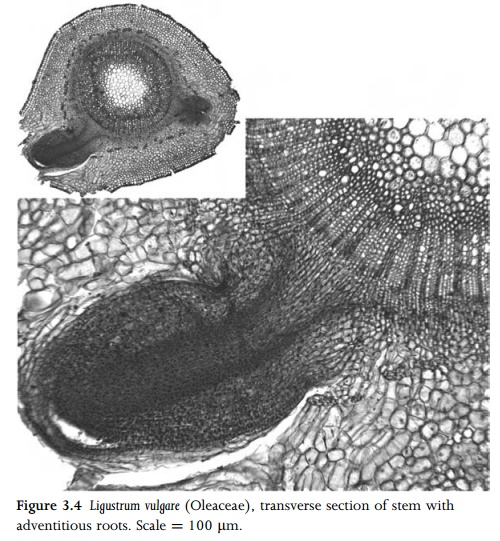Chapter: Anatomy of Flowering Plants: An Introduction to Structure and Development : Root
Initiation of Lateral and Adventitious Roots
Initiation of Lateral and
Adventitious Roots
Lateral
roots are branches of the tap root. They are initiated in relatively mature
tissues some distance from the apex, often in acropetal sequence; the most
recently-formed lateral roots are usually those nearest to the root apical
meristem. In angiosperms, lateral roots have a deep-seated (endogenous) origin.
Root forma-tion is usually initiated in groups of ‘‘founder cells’’ in the
peri-cycle, often adjacent to the xylem poles. The position of lateral root
initiation in the pericycle is usually at a point adjacent to a protoxylem
pole, unless the root is diarch, in which case initia-tion is sometimes
opposite a phloem pole. However, in monocots lateral root initiation can be
opposite either protoxylem or phloempoles, though in roots with a large number
of vascular poles it is often difficult to determine the precise site of
initiation. The founder cells undergo a series of periclinal and
anticlinal divisions to form a lateral root primordium. In many species some
subsequent cell divisions occur in the endodermis, so that ultimately both the
pericycle and the endodermis contribute to the tissues of the lateral root. The
growing lateral root pushes its way through the cortex and epidermis of the
parent root, either by mechanical or enzymatic action.

Adventitious
roots are formed in other parts of the plant, primarily stem tissue. They have
various sites of origin, from deep-seated (endogenous) (Fig. 3.4), to (more
rarely) exogenous, arising from superficial tissues such as the epidermis (e.g.
in surface-rooting Begonia leaves). In most monocots adventitious roots arise
from cell divisions in the pericyclic region of the stem; the primary
thickening meristem contributes to adventitious root formation. Adventitious
roots are often formed at nodes on the stem, which is why in horticulture
cuttings are most commonly taken from just below a node. Adventitious roots may
also form from callus tissue at the site of a wound.
Related Topics